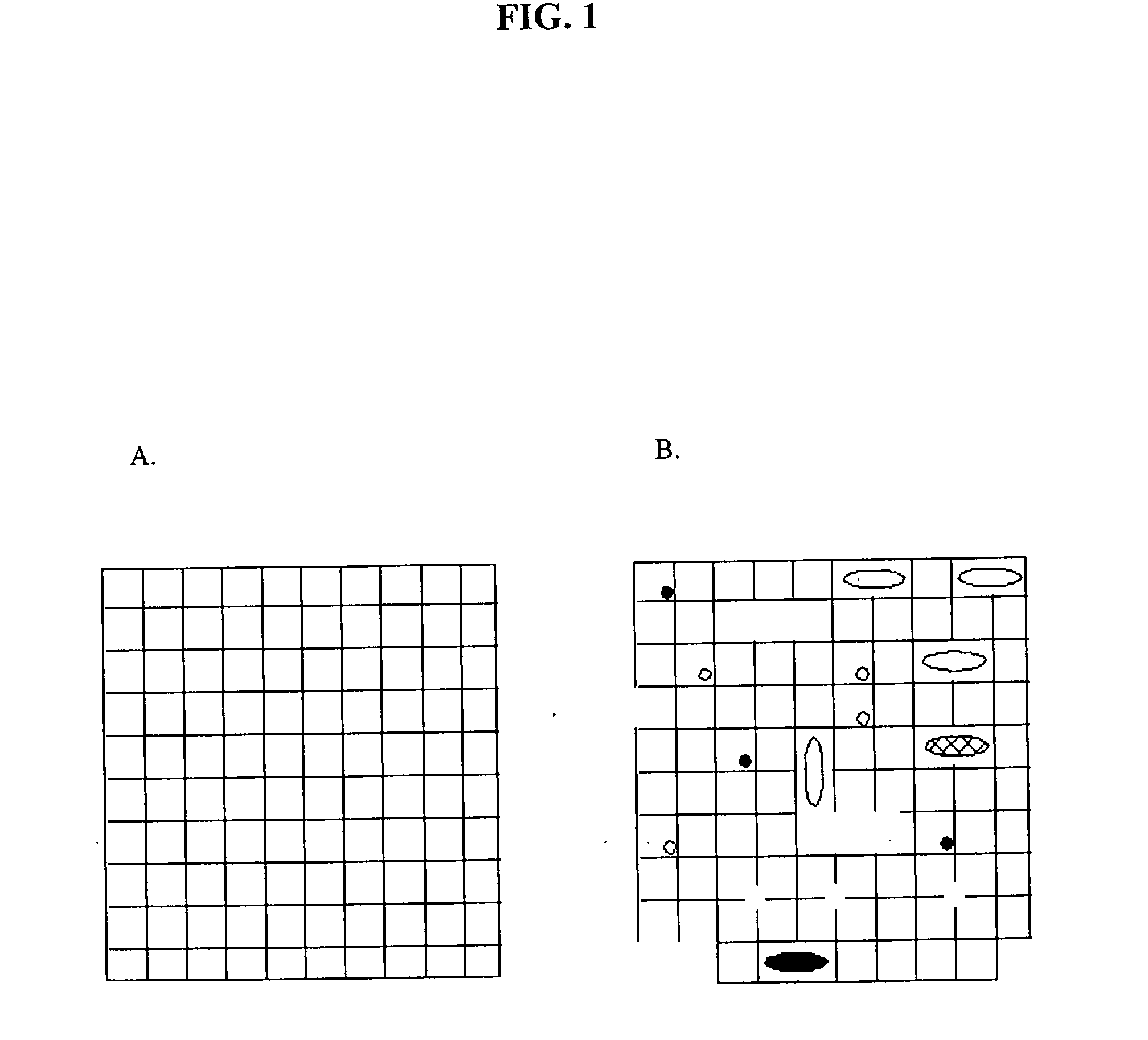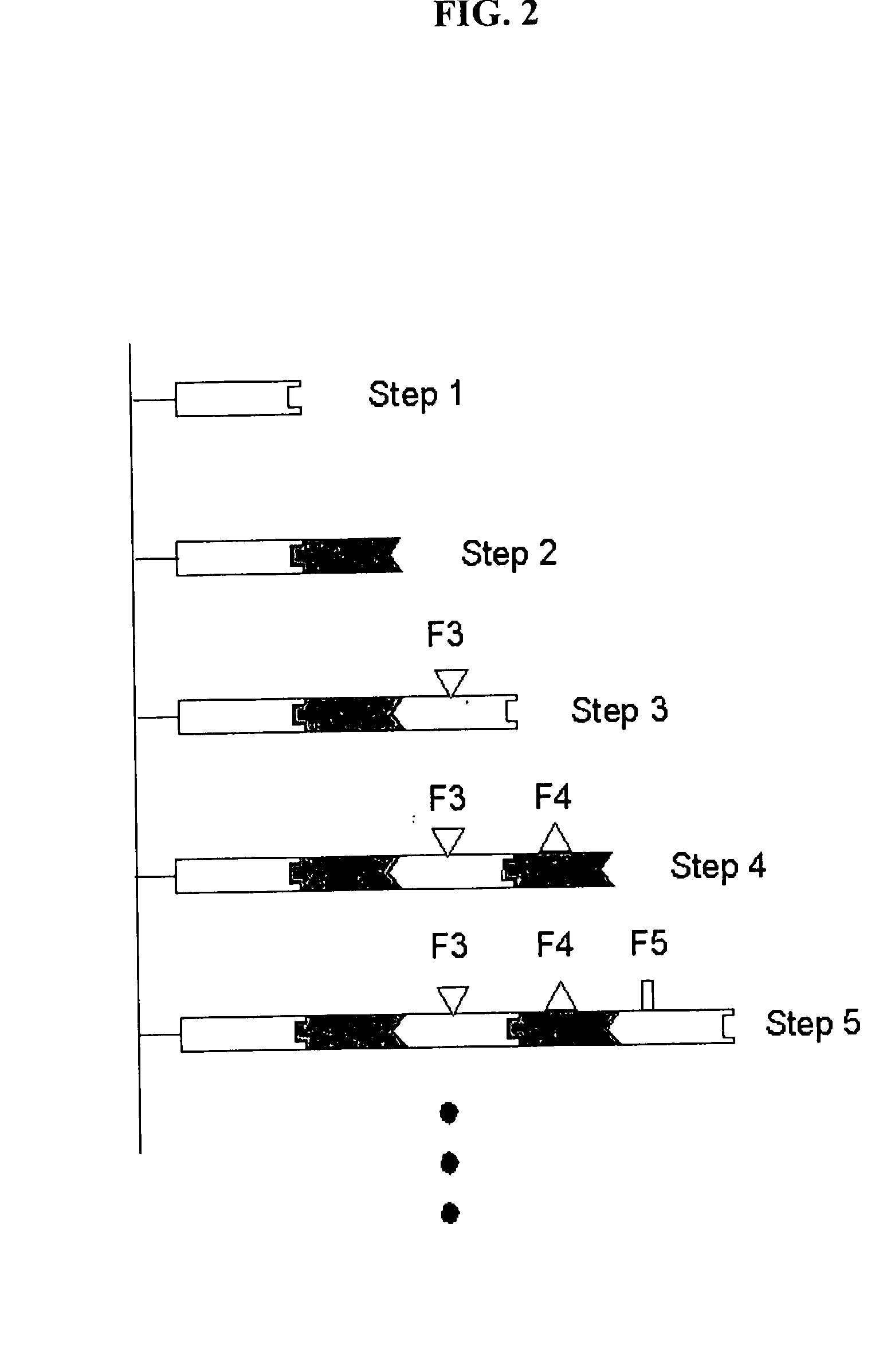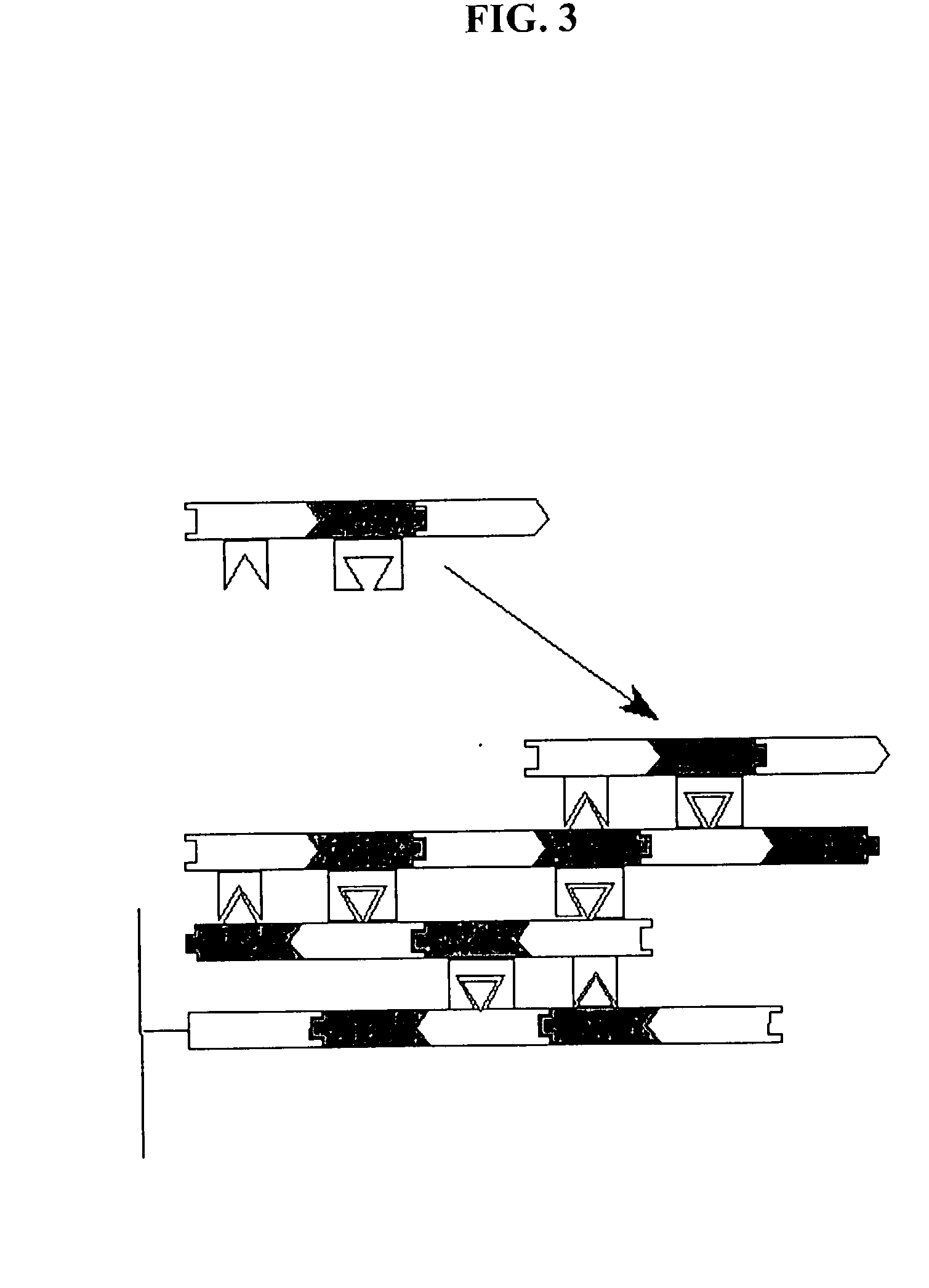Staged assembly of nanostructures
a nanostructure and stage technology, applied in the field of assembly of nanostructures, can solve the problems of difficult assembly of nanostructures, slow and tedious manipulation of individual components necessary in the fabrication of nanostructures, etc., and achieve the effect of precise geometric and spatial positioning of individual components
- Summary
- Abstract
- Description
- Claims
- Application Information
AI Technical Summary
Benefits of technology
Problems solved by technology
Method used
Image
Examples
example 1
6. EXAMPLE 1
Staged Assembly of Hybrid Pilin Assembly Units
[0406] In this example, hybrid pilin assembly units are constructed using the following steps of the staged-assembly methods of the invention.
[0407] With the immobilized papA and the hybrid proteins engineered as disclosed above, it is possible to assemble a filament comprising five pilin units and having two ras epitopes positioned, one each, on the second and fifth units in the assembly (FIG. 17).
[0408] (1) In the first step, PapA units are immobilized on a solid matrix using methods well known in the art. For example, a biotin moiety may be added to the amino terminus of papA; the papA then incubated in the presence of a surface coated with streptavidin. The very strong interaction of biotin with streptavidin will lead to the immobilization of papA on the surface. Many other methods for the immobilization of a protein on a solid surface are available and well known to those of ordinary skill in the art.
[0409] (2) In the se...
example 2
7. EXAMPLE 2
Staged-Assembly of a Nanostructure Having a Joining Element Comprising a Peptide Epitope
[0414] This example discloses staged assembly using monovalent Fab fragments ("Fab1" and "Fab2,") each with a different peptide epitope fused at their C-terminus (FIG. 7).
[0415] The CDR of Fab1 has specificity for the peptide fused to the C-terminus of Fab2. Likewise, the CDR of Fab2 has specificity for the peptide fused to the C-terminus of Fab1.
[0416] The two joining pairs provide specific interactions between these two assembly units. The first Fab can be immobilized to a solid substrate using standard methods. This surface can then be incubated with a solution containing Fab2 which has fused a peptide exhibiting specificity for Fab1. This incubation will result in the formation of a nanostructure intermediate comprised of one copy of Fab1 (immobilized) and one copy of Fab2. The intermediate can then be incubated against a solution containing Fab1, resulting in the formation of an ...
example 3
8. EXAMPLE 3
Staged Assembly Using Multispecific Protein Assembly Units
[0422] This example discloses an embodiment of the staged assembly methods of the invention that uses multispecific protein assembly units. Permutations and combinations of multispecific protein assembly units may be used for the construction of complex one-, two-, and three-dimensional macromolecular nanostructures, including, for example, the staged assembly illustrated in FIG. 21, which utilizes bivalent and tetravalent assembly units.
[0423] Staged assembly of a nanostructure comprising a four-point junction only requires a minimum of five assembly units and four joining pairs. The five assembly units required include four bispecific and one tetraspecific assembly unit. In this example, the joining pairs employed to join adjacent assembly units are idiotope / anti-idiotope in nature. A minimum of four such idiotope / anti-idiotope joining pairs are needed for staged-assembly in this example.
8.1. Assembly Units
[0424...
PUM
| Property | Measurement | Unit |
|---|---|---|
| Fab angle | aaaaa | aaaaa |
| pH | aaaaa | aaaaa |
| angle | aaaaa | aaaaa |
Abstract
Description
Claims
Application Information
 Login to View More
Login to View More - R&D
- Intellectual Property
- Life Sciences
- Materials
- Tech Scout
- Unparalleled Data Quality
- Higher Quality Content
- 60% Fewer Hallucinations
Browse by: Latest US Patents, China's latest patents, Technical Efficacy Thesaurus, Application Domain, Technology Topic, Popular Technical Reports.
© 2025 PatSnap. All rights reserved.Legal|Privacy policy|Modern Slavery Act Transparency Statement|Sitemap|About US| Contact US: help@patsnap.com



